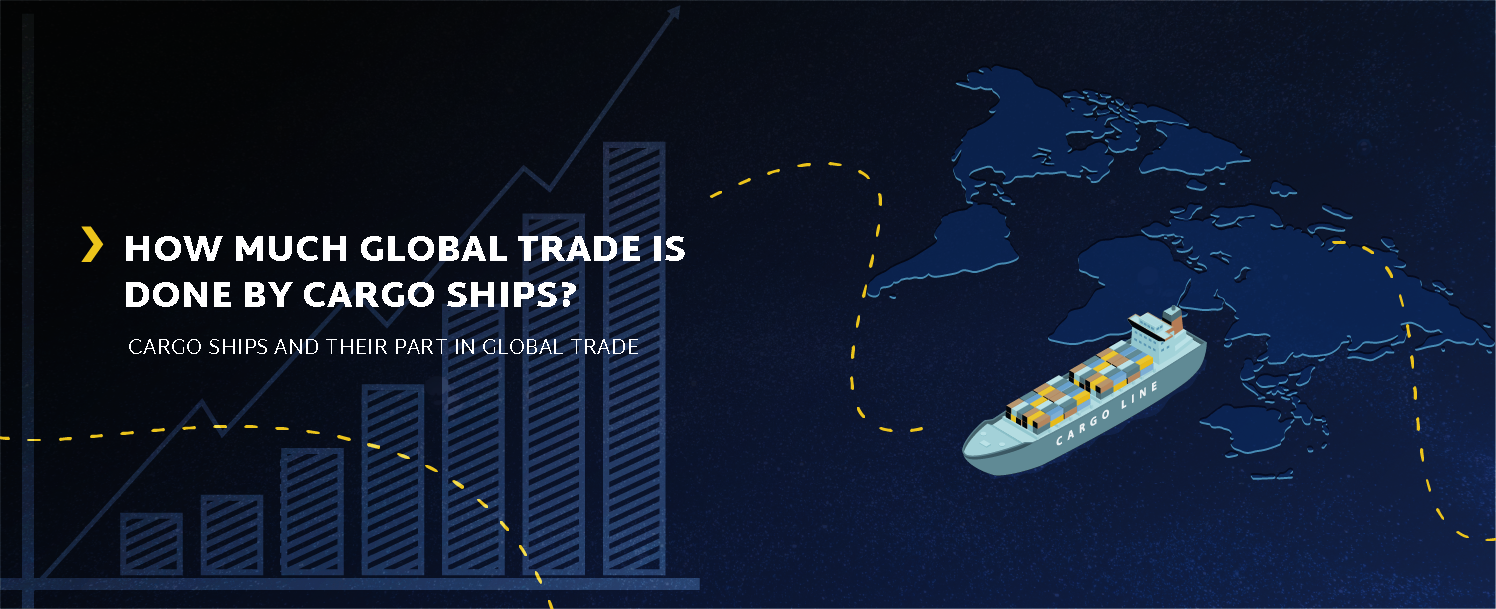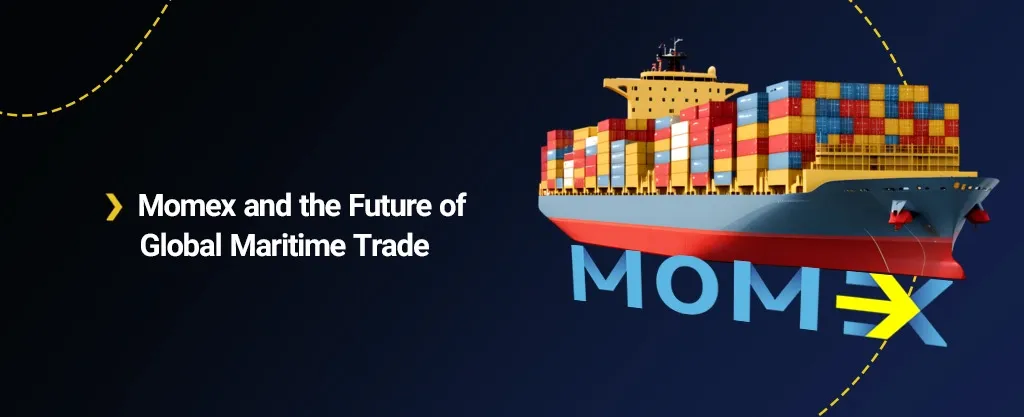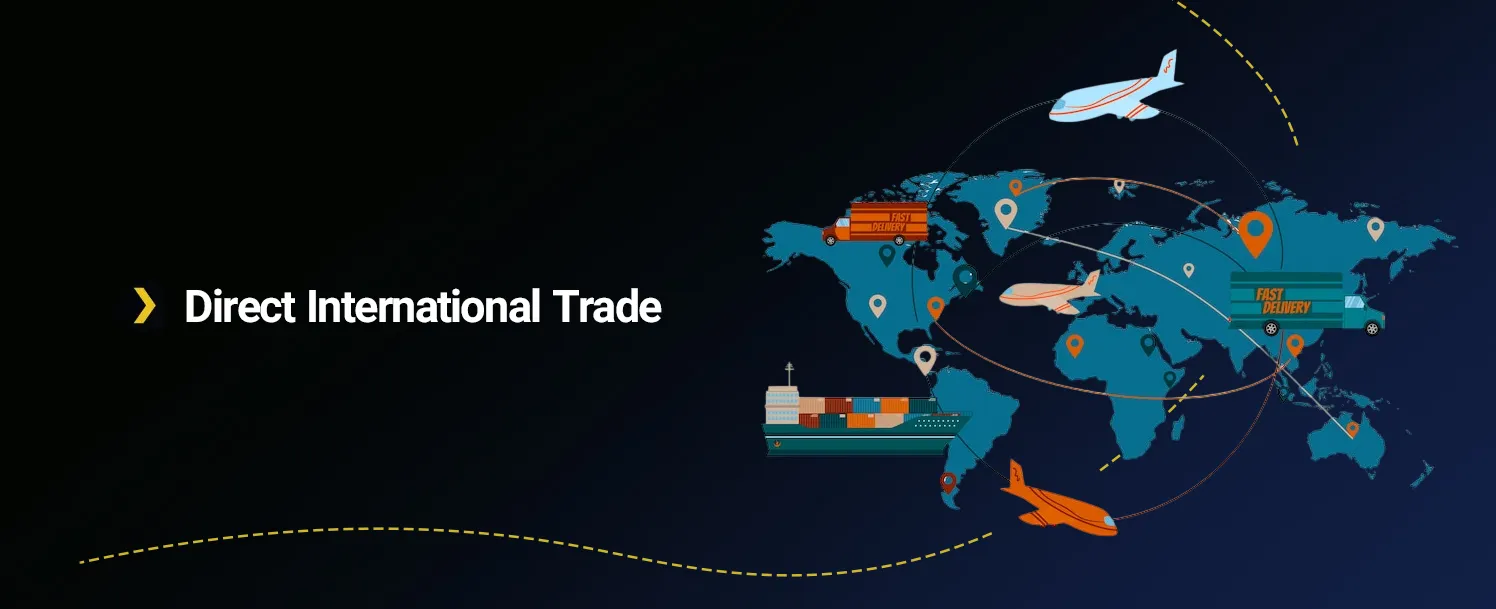Ships facilitate world trade and are the core of the contemporary economy. The sea ships move merchandise across continents to feed industries and businesses, consumers, and everything they require. But exactly how much of the world's trade relies on ships? Shockingly enough, the answer is: that nearly 80-90% of global trade depends on cargo ships. Let us now focus on how cargo ships dominate global trade, what problems these vessels encounter, and what the outlook is for ocean shipping.

Cargo Ships and Their Part in Global Trade
Cargo ships serve as the vital connections of global trade; they carry goods in bulk across continents. From crude oil, coal, and iron ore to finished products such as electronics and clothes, cargo ships ship the supply chain efficiently and economically.
Industries That Depend on Cargo Ships
Several industries depend upon ocean freight:
1. Manufacturing: Finished products are manufactured in factories all over the world with the help of raw materials transported by sea.
2. Agriculture: Cereals, fruits, and meat are part of those foodstuffs transported by cargo ships to meet the food-security needs of the world.
3. E-Commerce: Internet retailing has led to increasing reliance on container ships to deliver merchandise from distribution centers and warehouses all over the world.
Without cargo ships, much of the globalized economy we have today would not be possible.

Key Statistics on Global Trade via Cargo Ships
Shipping is also done in huge quantities and is a cornerstone of global economic activity and trade. More than 80 percent of all merchandise traded on the earth, in volume, travels by sea. In terms of weight, the percentage is even higher, since highly-sought oil and gas for energy and industrial purposes travel by sea. The high level of consumption by sea indicates that shipping is a good means of linking manufacturers, producers, and consumers everywhere in the globe.
Important shipping routes such as the Panama Canal, the Suez Canal, and the Strait of Malacca are critical lifelines in global commerce. These three important channels enable fast and effective transportation of goods between major markets around the globe.
For instance, the Panama Canal connects the two great oceans, the Atlantic and the Pacific, saving precious time for ships; similarly, the Suez Canal is very important, connecting Asia to Europe. Likewise, the Strait of Malacca links trade from the Indian to the Pacific Ocean as one of the busiest sea lanes in the world. Waterways, however, are not just conduits through which transport takes place but rather serve as economic channels in ensuring the continuity of international trade.
Sea freight transport is similarly diversified concerning vessel type since cargo vessels are built accordingly to serve specific shipping needs. To this end, bulk carriers transport those very substances (shipments of grain, iron ore, and coal) that constitute the core of industrial production and food supply chains; on the other hand, container ships are designed to carry an astonishing range of manufactured goods-from electronics to clothing-in standard-sized containers seemingly designed to introduce efficiency and homogeneity into global trade.
Oil tankers are another important aspect of the shipping business as they carry massive quantities of crude oil and other liquid cargo; this helps to supply most of the energy demand around the world.

Why is Maritime Shipping So Dominant?
There are a variety of reasons that explain why maritime shipping dominates world trade:
1. Cost Efficiency
Compared to transporting bulky amounts of commodities over long distances, cargo ships are way cheaper than air or rail transport. It is from this financial benefit in sea transport that cargo shipping is used as a preferred way of bulky goods and heavy cargo.
2. High Cargo Capacity
One cargo vessel can carry thousands of containers, and each of those containers can hold a host of commodities. Such is the volume that companies can shift massive amounts of product in one journey, which in itself simplifies logistics immensely.
3. Accessibility
Sea freight reaches every corner of the world. With over 4,000 ports, cargo vessels are capable of facilitating the delivery of goods to nearly anywhere in the world.
4. Environmental Considerations
Although cargo ships are GHG emitters, they are more fuel-efficient per ton of commodities moved compared to any other transport mode and are thus a relatively sustainable choice for large-scale trade.
Problems With Cargo Shipping
Despite its ubiquity, there are numerous threats facing cargo shipping that undermine its efficiency and reliability:
1. Geopolitical Occurrences
Geopolitical conflicts, ranging from wars to trade wars, may interfere with key shipment routes through delays or increased costs. A good example is the blocking of the Suez Canal in 2021, which indicated how a single incidence could lead to global disruption of supply chains.
2. Increased Fuel Prices
Increased fuel costs mean higher operating expenses for shipping companies. With these realities, cleaner fuels and energy-efficient technologies are in strong demand to reduce expenses and an environmental impact.
3. Supply Chain Disruptions
Congested ports, lack of labor, and finally the COVID-19 pandemic opened the world's eyes to the vulnerability of the global supply chain. Delays in offloading cargo could be disastrous to the economy and cause shortages and high prices.
4. Environmental Regulations
">The IMO 2020 Sulphur Cap, along with other international conventions, has bound the shipping sector to minimize their energy impact, thus propelling the involved companies towards their search for cleaner technology and fuels.

Cargo Ships and the Future of Global Trade
Cargo shipping can do its part by keeping up with the demands of a fast-evolving world that technological development and sustainability related to the future of international maritime trade are both forcing and shaping.
Among all the developments that occur, one of the most thrilling is the creation of autonomous ships. Driven by artificial intelligence, the ships could transform maritime operations: they would render the shipping business safer since human error would be reduced; navigation paths would be optimized for greater efficiency; and expense would be reduced drastically. Autonomous ships could well be the new norm for the future of global shipping.
-
Green Shipping Technology
Green technologies are being pitched by the industry for handling environmental issues: technologies that include decarbonization, bringing out alternative fuels such as hydrogen and ammonia, with the adoption of electric and hybrid propulsion. With that in place, there is a guarantee of a significant minimization of greenhouse gas emissions as maritime shipping becomes sustainable, and the industry is aligned with international climate goals.
Digitalization and AI are rapidly altering the maritime industry by bringing in smart shipping solutions. Shipping companies can work out routes in an optimal way, increase fuel efficiency, and advance logistics with novel solutions such as real-time monitoring and predictive analytics facilitated by AI-driven cargo management. These solutions foster not only operational effectiveness but also informed decision-making toward building an agile and resilient shipping system.
As the world's population and economies continue to grow, so does the world's demand for sea trade, especially in emerging markets. Forecasts for trade growth are such that cargo shipping will remain a propellant for international trade, which will have a key function in the fulfillment of the increasing demand for goods, connecting producers and consumers on various continents and augmenting the expansion of economies at large.
Cumulatively, all these innovations and initiatives are leading toward a more sustainable, efficient, and future-proofed industry that will be very confident in its continued relevance and resilience in an ever-changing world.
Cargo Ships Driving Global Trade
Cargo ships are the silent workers of global commerce, providing uninterrupted mobility of merchandise between continents. Though the tide comes in or out, this industry is reinventing itself with green initiatives to stay ahead. With global commerce still to reach a high point, cargo ships' contribution will continue to be second to none, connecting markets and supporting economic development on all continents.
FAQ
- What % of global trade do cargo ships carry?
Almost 80-90% of global trade, in terms of volume, is performed with the help of cargo ships, and hence they form a vital part of the world economy.
- For what reasons does cargo shipment prove to be more effective than its alternatives?
The cargo ships are cost-effective, can carry bulk volumes of goods, and reach practically all ports across the globe, hence proving to be apt for bulkier movements.
- What are the major challenges confronting the cargo shipping industry today?
Some of the principal challenges include rising fuel costs, environmental regulations, supply chain disruptions, and geopolitical instability.
- How is the cargo shipping industry addressing environmental concerns?
The industry is adopting green technologies, alternative fuels, and energy-efficient practices to reduce its effects on the environment.














